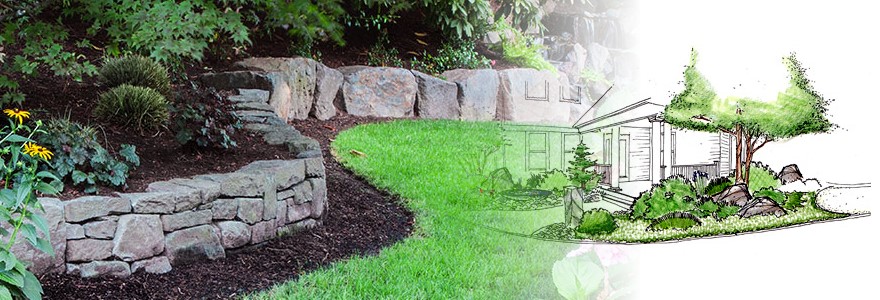
When designing a residential landscape, the most important step is to put a plan on paper. Developing a master plan will save you time and money and is more likely to result in a successful design. A master plan is developed through the 'design process': a step-by-step method that considers the environmental conditions, your desires, and the elements and principles of design. The goal is to organize the naturalfeatures in your yard into an aesthetic, functional, and environmentally sustainable landscape.
The Design Process
The five steps of the design process include: 1) conducting a site inventory and analysis, 2) determining your needs, 3) creating functional diagrams, 4) developing conceptual design plans, and 5) drawing a final design plan. The first three steps establish the aesthetic, functional, and horticultural requirements for the design. The last two steps then apply those requirements to the creation of the final landscape plan.
The process begins with a site inventory and analysis of soil, drainage, climate conditions, and existing vegetation. This is a critical step for both plant selection and placement and locating family activities and functions. It's important because the same climate conditions that affect the plants—temperature, humidity, rain, wind, and sunlight—also affect you, the user. The next step is to make a list of your needs and desires—this helps you determine how your yard and landscape will be used. The site and user analyses will also help you establish a theme for the form and style of your design. The functional diagram is then used to locate the activity spaces on the site and from this diagram a conceptual plan is developed. The last step is a final design that includes all the hardscape and planting details that are necessary for installation. Throughout the design process there are ten important things to consider:
-
Establish what the customer wants and needs.
-
Understand the site for plant selection and activity location.
-
Establish a form to help determine shapes and organize spaces.
-
Create and link spaces by designating activity areas and linking with elements.
-
Consider the function of plants for both the environment and the user.
-
Structure the plantings by using massing and layering techniques.
-
Highlight important points such as transition areas and focal points.
-
Pay attention to detail in the materials, the colors, and the surface textures.
-
Take time into account for the growth and maintenance of plants.
-
Protect the resources of our clients by using sustainable design practices.
The Cleaning Process
The cleaning process depends on multiple variables, however, SUPREME LANDSCAPING, has a basic methodology that applies to any cleaning process.
-
Raise customer expectations.
-
Define an action plan.
-
Define the operating conditions of cleanliness.
-
Set the type of equipment to use.
-
Define the human resource.
-
Execute the plan of action.
-
Track the cleaning process.
SUPREME LANDSCAPING
For more information or details please contact us. SEND MESSAGE




